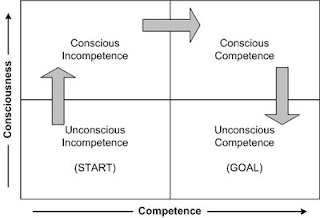The Jasper materials respond to passivity in learning working through canned problems towards correct solutions isolated from context. Jasper incorporates video-based instruction providing generative activities and cooperative situations, whose supporting theoretical framework is that of anchored instruction, where teaching is contextualized in problem-rich environments that engage sustained exploration (Cognition and Technology Group at Vanderbilt, 1992a). While traditional questioning selects important data beforehand, numbers presented during clips might be pertinent, asking learners to differentiate what is meaningful for the problem, categorizing and prioritizing optimal solutions. Rather than isolating content, Jasper components are posed in realistic context to promote independent thinkers that can identify personal issues, moving learners from passive inert knowledge to constructivist exploration of misconceptions. Such problem-based learning enables self-generated information that is better remembered than transmitted knowledge. Unlike Khan Academy, videos can be segmented to make complexity manageable, employing media platform to accommodate poor readers with realistic narratives, enhancing opportunities to develop confidence, generating sub-problems to extend exploration. Video disc format enables controlled access, searching back and freeze-frame, to identify additional relevant data. With multiple rescue solutions possible, students communicate reasoning cooperatively, posing analog problems to master skills in context. Rather than errorless learning, authentic problems offer frameworks to correct preconceptions, whose real-world complexity produces motivation to create inquiry communities for improved interaction.
Specifics from the videos: Trip planning requires multiple considerations of fuel consumption, tank capacity and wind speeds, where headwind definitions are introduced in context using easy numbers for computation. Communication employs reasoning using analogies to change perspectives while describing historical artifacts of real people. Learners consider whether the most popular solution is always the best, which varies between schools and classes given priorities. Considering other variables like expenses, risk and time prompts students to rework plans to iteratively make them better. Solutions pose new ideas for challenges, sifting through information to decide what factors are important.
Groups work through problems on a just-in-time basis, watching videos without knowing what problems need solving, evaluating variables for multiple plans. Moving from stone-age designs to related adventures extends canned problems using what-if questioning (Biswas et al., 2001). Coaches scaffold guided discovery in exploratory setting, varying interaction styles to create learning opportunities, generalizing smart tools between problems. Learning occurs during teaching as well, doing reverse mentoring where tutors learn alongside tutees. When given the possibility for self-explanation, students tend to understand content better while preparing to teach. Differing experiences generate different questions, collaboratively working through multiple paths with conflicting solutions. Rather than viewing learning as fact accumulation, inert associations can be integrated constructively to consider multiple solution possibilities. Students learn through social activity to evaluate alternatives, whose problem-solving space improves performance, employing thinking-aloud during solving process in making cooperative solutions (Vye et al., 1997).
References
Biswas, G. Schwartz, D. Bransford, J. & The Teachable Agent Group at Vanderbilt (TAG-V) (2001). Technology support for complex problem solving: From SAD environments to AI. In K.D. Forbus and P.J. Feltovich (Eds.)Smart Machines in Education: The Coming Revolution in Education Technology. AAAI/MIT Press, Menlo, Park, CA. [Retrieved October 22, 2012, from: http://www.vuse.vanderbilt.edu/~biswas/Research/ile/papers/sad01/sad01.html
Cognition and Technology Group at Vanderbilt (1992a). The Jasper experiment: An exploration of issues in learning and instructional design. Educational Technology, Research and Development, 40(1), 65-80.
Vye, Nancy J.; Goldman, Susan R.; Voss, James F.; Hmelo, Cindy; Williams, Susan (1997). Complex mathematical problem solving by individuals and dyads. Cognition and Instruction, 15(4), 435-450.
